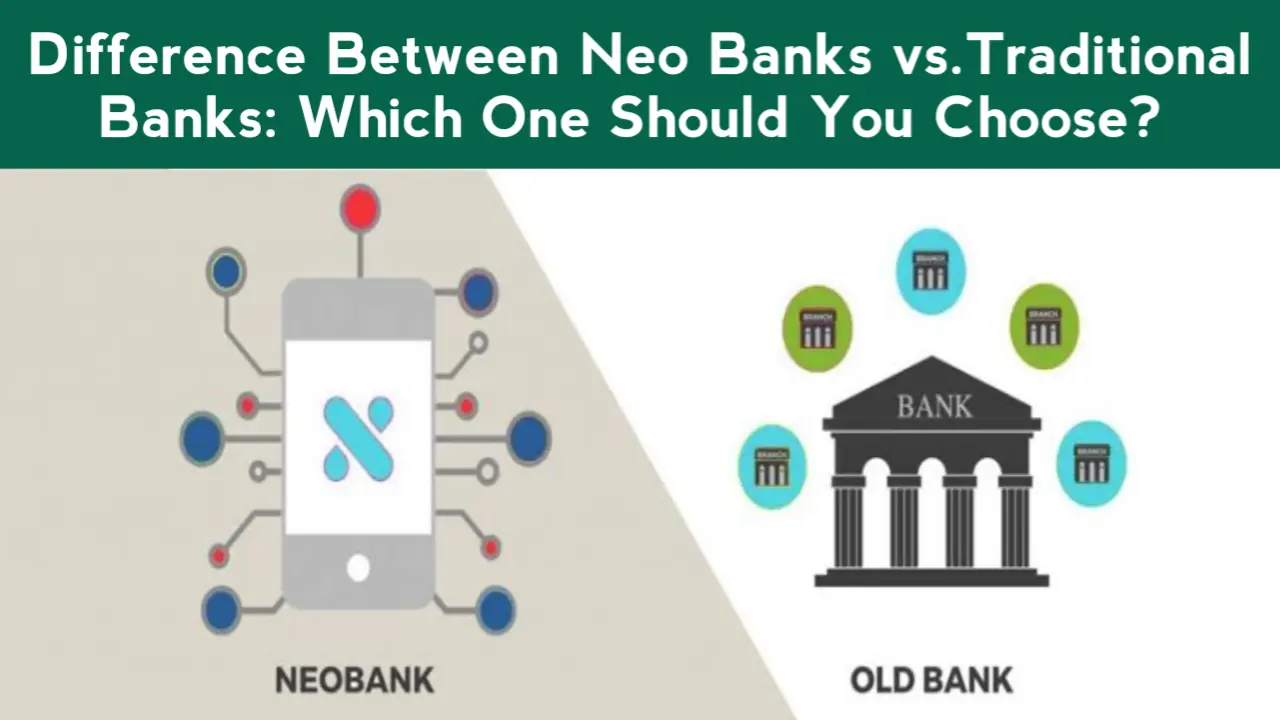Introduction: Your Bank is No Longer Just a Place—It’s an Experience
The way we interact with our money is undergoing a radical transformation. For centuries, our financial lives revolved around physical branches. Today, they revolve around our smartphones. This shift has given rise to a new contender: the Neo Bank, challenging the long-held dominance of Traditional Banks.
But is this new model right for you, or does the old guard still hold the advantage? This isn’t just about choosing a bank; it’s about choosing a financial philosophy that aligns with your digital lifestyle.
The Core Difference: A Tale of Two Models
- Traditional Banks: The established institutions with a physical presence. Think of them as the financial department stores—large, comprehensive, and built on decades of trust and in-person service.
- Neo Banks: Digital-only financial platforms that operate exclusively online or through mobile apps. Think of them as the streamlined financial apps—agile, user-friendly, and designed for the modern, on-the-go consumer.
The Head-to-Head Breakdown
1. User Experience & Convenience
- Traditional Bank: Offers in-person service for complex needs (e.g., mortgage advice, notary services). However, their digital apps and websites can often feel clunky, outdated, and slow to update.
- Neo Bank: Wins on digital convenience. Their entire existence is built around an intuitive, fast, and feature-rich mobile app. Banking tasks that take minutes in a branch are completed in seconds. Features like real-time spending notifications, instant card freezing, and sleek budgeting tools are standard.
2. Accessibility & Reach
- Traditional Bank: Unmatched for cash deposits and in-person problem-solving. Their extensive ATM and branch network is a significant advantage if you frequently handle cash or value face-to-face interactions.
- Neo Bank: Accessible 24/7 from anywhere with an internet connection. There are no geographical limits or business hours. This is ideal for digital natives, travelers, and anyone who hates waiting in line.
3. Fees & Costs
- Traditional Bank: Typically higher fees for account maintenance, minimum balance non-maintenance, ATM usage (out-of-network), and paperwork. Their physical infrastructure (branches, staff) results in higher overhead, passed on to the customer.
- Neo Bank: Generally offers low or zero fees for maintenance, fund transfers, and bill payments. With no physical branches, their operational costs are significantly lower, allowing them to pass the savings to users.
4. Product Range & Services
- Traditional Bank: A one-stop shop. They offer a vast array of products: savings/current accounts, home loans, auto loans, credit cards, wealth management, insurance, and safe deposit boxes.
- Neo Bank: Focused and specialized. They excel at core services like savings accounts, payments, and money transfers. Some are expanding into personal loans and investment products, but they generally lack complex financial products like mortgages.
5. Security & Trust
- Traditional Bank: Boasts a long history, physical assets, and are often backed by government deposit insurance (like DICGC in India up to ₹5 lakhs). This provides a deep-seated sense of security and permanence.
- Neo Bank: Employs cutting-edge security like biometric logins, encryption, and AI-driven fraud detection. However, as newer entities, they are still building their brand reputation. It’s crucial to verify if they operate with a banking partner that provides the necessary deposit insurance.
Who Should Choose What? A Clear Guide
Choose a Traditional Bank if you:
- Frequently deposit or withdraw large amounts of cash.
- Require complex financial products like a mortgage or business loan.
- Prefer in-person service and value building a relationship with a local banker.
- Are less comfortable managing all your finances through an app.
Choose a Neo Bank if you:
- Are tech-savvy and live a digital-first life.
- Want a seamless, intuitive mobile banking experience.
- Are cost-conscious and want to avoid hidden fees.
- Value smart financial tools for budgeting, saving, and tracking spending in real-time.
The Smartest Strategy: Why Not Both?
You don’t have to make an absolute choice. Many financially savvy individuals use a hybrid approach:
- Use a Traditional Bank as your “Financial Hub”: Keep your primary savings, secure your home loan, and manage complex investments through a trusted traditional bank.
- Use a Neo Bank as your “Daily Spending Account”: Link it to your UPI, use it for online shopping, subscriptions, and daily expenses. Benefit from its superior app experience, instant spending insights, and zero transaction fees.
This strategy gives you the best of both worlds: the security and comprehensive services of a traditional institution, combined with the agility and convenience of a modern financial tool.
The Bottom Line: It’s About Your Financial Lifestyle
The competition between Neo and Traditional banks is ultimately a win for consumers, forcing all players to innovate and improve.
- Neo Banks are setting the new standard for user experience and digital convenience.
- Traditional Banks are responding by digitizing their services while still offering unmatched depth and security.
Your ideal bank isn’t about which one is objectively “better.” It’s about which one is better for you. Assess your habits, your needs, and your comfort with technology. The right choice is the one that makes managing your money simpler, safer, and more aligned with how you live your life.
We’re curious! Are you team Traditional Bank, team Neo Bank, or have you adopted the hybrid model? Share your experience and which features matter most to you in the comments below.





